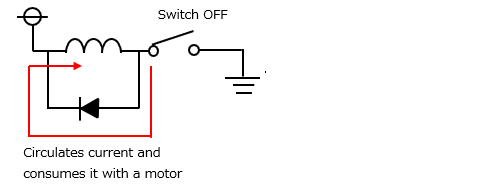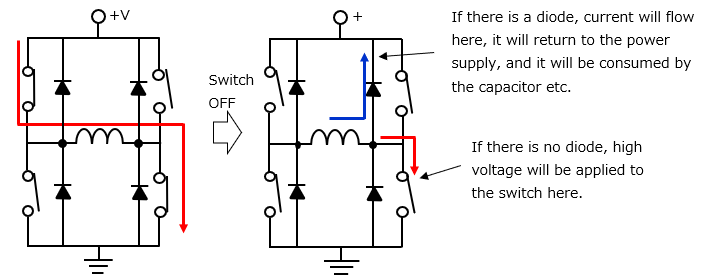Freewheeling(Flyback) Diode |
||||
・Freewheeling Diode ・Alternating current ・Termination resistor ・CPU, LSI, IC, ASIC ・Adders, Subtractors ・H-bridge circuit ・Motor type ・Inverter ・AC-DC converter ・DC-DC converter ・Transformer ・ROM, RAM, register, cash ・open/short circuit failures ・Low-side, high-side driver ・Mechanism of electric shock ・Zener diode ・Rectifier circuit ・Pull up/down resistor ・Joule heat ・Solenoid valves, relays ・Comparator ・Switch Type ・Analog-to-Digital Conversion ・Clock generator ・Surge Current ・Clarke transformation ・d-q, Park transformation ・Sine Wave Generation |
・In Japanese
■Basic circuit using Freewheeling Diode
In a circuit using a coil as shown below, when the switch is turned on and the current flows through the coil and then the switch is turned off, the coil tries to keep the current flowing due to Electromagnetic induction and a high voltage is generated instantaneously.
This is called flyback voltage or surge voltage. All of this flyback voltage is applied to the switch, causing the switch to fail. ■Application of freewheeling diode to H-bridge circuit
In the H bridge circuit, a diode is attached in parallel to each switch as shown below, which is also a freewheeling diode.
At first glance, it seems that the flyback voltage cannot be prevented when it is connected in parallel with the switch, but this is intended to release the voltage applied to other switches. ■Flywheel diodes?
In Japan, some people refer to freewheeling diodes as flywheel diodes.
|
|
||


